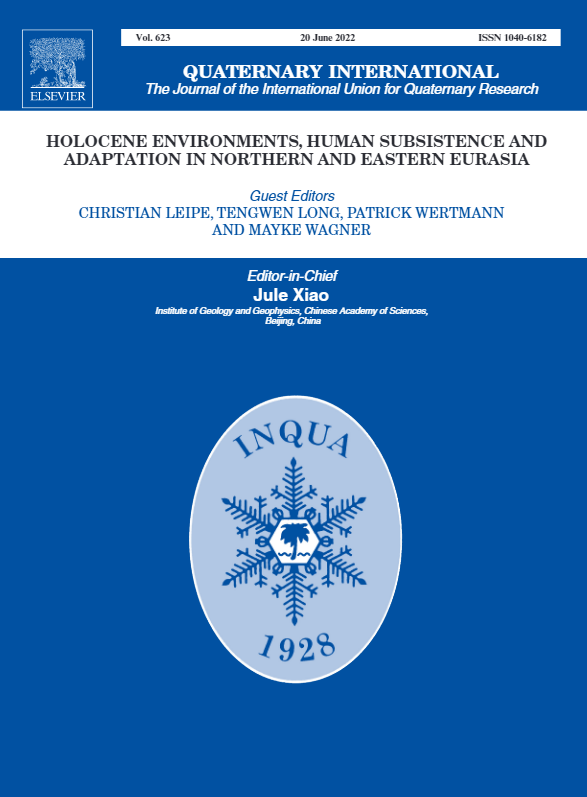Publications
Freshwater reservoir effects in Cis-Baikal: An overview
This paper summarises research on freshwater reservoir effects (FRE) in the Baikal region and their impact on the radiocarbon dating of human remains. Varying relationships are seen between human δ13C and δ15N values and 14C offsets in paired human-terrestrial mammal radiocarbon dates from the same graves in the different microregions of Cis-Baikal. In the Upper Lena microregion the FRE may also vary through time. These differences can be related in some cases to different isotopic ecologies, and in [...]
Parental investment as social agency and catalyst to complexity
Re-examination of the relationships between diets as inferred isotopically and grave goods in light of new data has revealed the importance of parental investment for Early Neolithic populations in Cis-Baikal, Siberia. The Kitoi Culture developed and maintained a flexible but expensive broad-spectrum subsistence strategy. Moderately high extrinsic risk factors produced periodic famines and metabolic stress evidence in skeletons. The small-scale efforts of parents to support their offspring through increased breast milk and plant food provisioning led to a [...]
Turning eastward: New radiocarbon and stable isotopic data for Middle Holocene hunter-gatherers from Fofanovo, Trans-Baikal, Siberia
A considerable amount of bioarchaeological research – including AMS 14C dating and stable carbon and nitrogen isotope analyses (δ13C and δ15N) – has been undertaken on the hunter-gatherers from the area west of Lake Baikal, known as Cis-Baikal. No such work has previously been reported for the east side of the lake, Trans-Baikal. Here, we present new radiocarbon dates and isotopic results for twenty individuals from the Fofanovo cemetery, located along the Selenga River on the southeast coast of [...]
Lateglacial–Holocene environments and human occupation in the Upper Lena region of Eastern Siberia derived from sedimentary and zooarchaeological data from Lake Ochaul
In the current study, different geochemical and biological proxies, including pollen, non-pollen palynomorphs, ostracods and molluscs, from an AMS radiocarbon-dated sediment core from Lake Ochaul (54°14′N, 106°28′E; 641 m a.s.l.) are presented and discussed. Ochaul is a fresh-water lake and an archaeological site situated ca. 100 km northwest of Lake Baikal in the upper reaches of the Lena River. The 260-cm-long sedimentary record presented here spans the Lateglacial–Holocene interval, between ca. 13,500 cal yr BP and the present. [...]
An integrative examination of elk imagery in Middle Holocene Cis-Baikal, Siberia
Elk are common in forager archaeological artwork of northern Eurasia. During the Middle Holocene, the peoples of Cis-Baikal produced numerous elk depictions in rock art and mobiliary items. Most of the rock art has now been destroyed. However, Cis-Baikal’s cemeteries and habitation sites are increasingly well documented, with the former generating numerous elk images. To better understand this imagery, we first discuss elk biology and behavior. We then contextualize the imagery within other forms of archaeological data, including [...]
Lateglacial and Holocene changes in vegetation and human subsistence around Lake Zhizhitskoye, East European midlatitudes, derived from radiocarbon-dated pollen and archaeological records
The numerous lake and peat sedimentary archives of Central European Russia are ideal for studying the Lateglacial–Holocene climate and vegetation history of the region. However, robustly dated palaeoenvironmental records have only become available in the last decade and are still few and far between. Together with the continuously growing archaeological record and increasing focus on absolute dating of cultural assemblages, such records, where available, offer an excellent opportunity to study human-environment interactions in the region. For this study [...]




